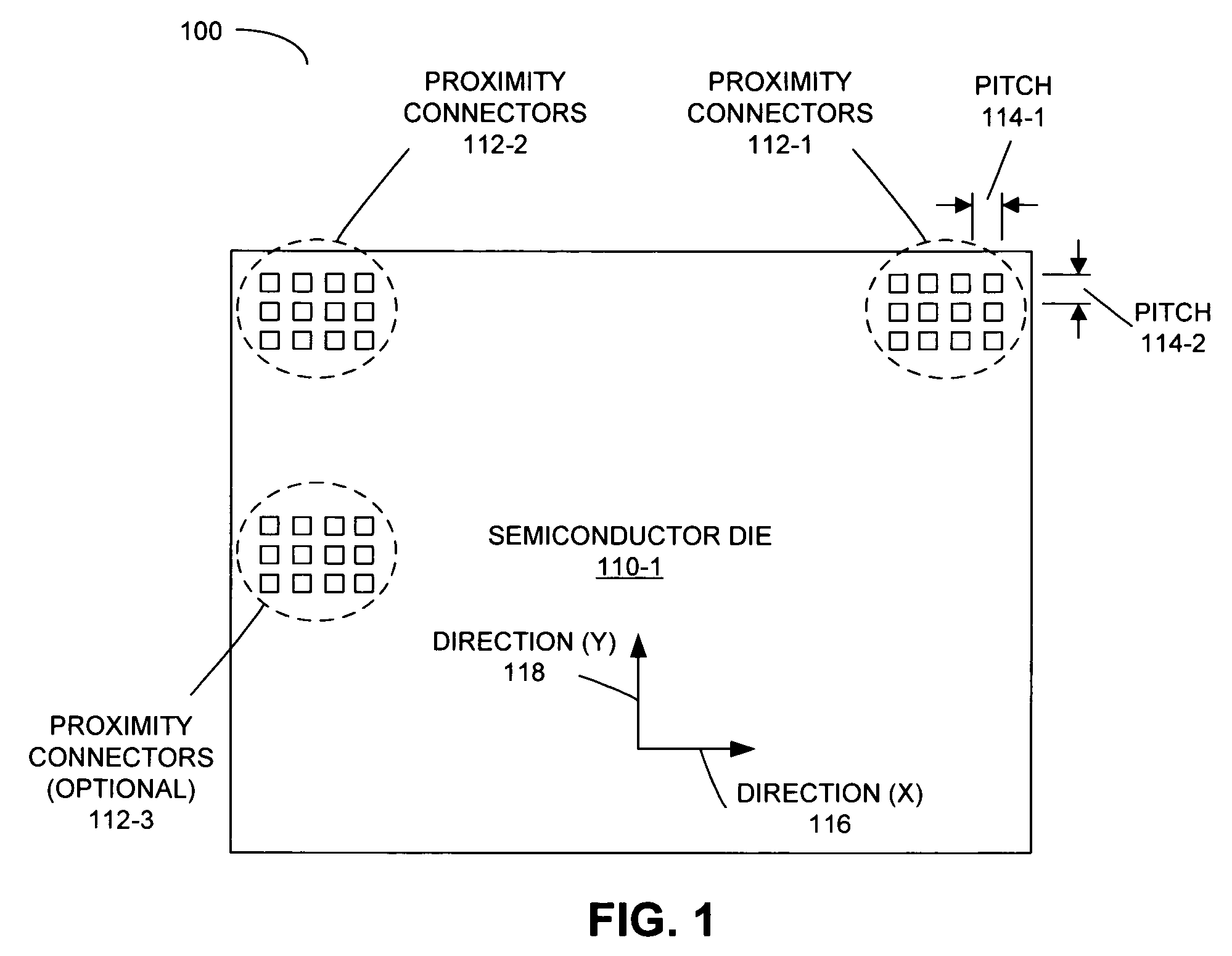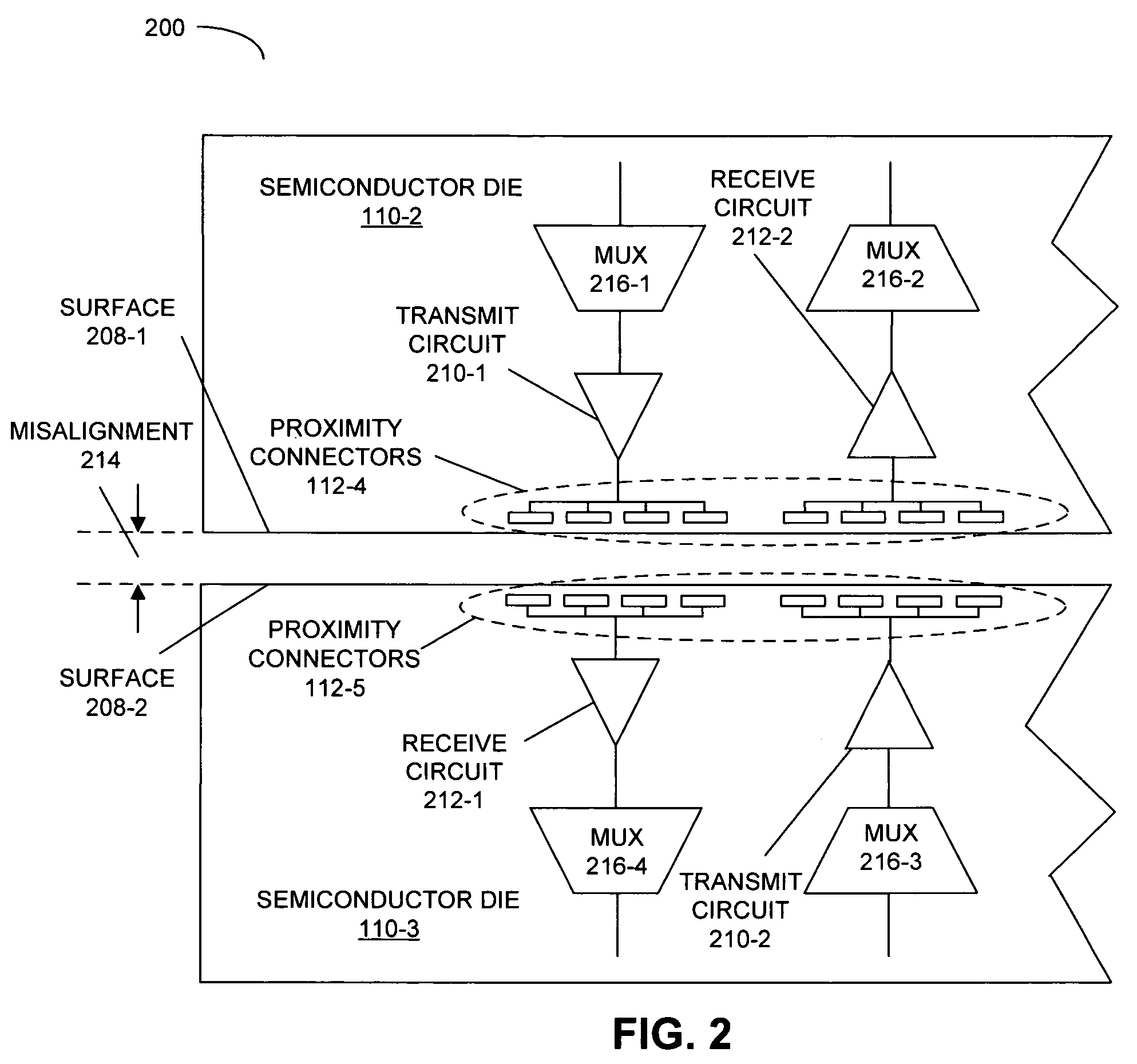Measuring chip-to-chip capacitance differentials by demodulating signals over a capacitance bridge
a capacitance differential and chip-to-chip technology, applied in the field of electronic circuits, can solve the problems of destroying received signals, increasing the difficulty of capacitance measurement, and existing capacitance-measurement techniques often suffering from limited sensitivity
- Summary
- Abstract
- Description
- Claims
- Application Information
AI Technical Summary
Benefits of technology
Problems solved by technology
Method used
Image
Examples
embodiment 450
[0061]Signals that are received on the terminal 414-3 are coupled to a follower or buffer 420. In an exemplary embodiment, the buffer 420 has unity gain. However, in other embodiments (such as embodiment 450) a differential amplifier or a variable-gain amplifier (for example, with a gain approximately between 3 and 10) may be used. The received signals are then coupled to mixer or modulator 422 in which they are demodulated using modulation signal VM(t) 424. In some embodiments, the signal VM(t) 424 is generated by optional signal generator 432 or is provided by a signal generator that is external to the semiconductor die 410-2. The signal VM(t) 424 is periodic and has a fundamental frequency that is the same as the fundamental frequency of the time-varying signals VT(t) 418-1 and -VT(t) 418-2. In exemplary embodiments, the fundamental frequency is between 1 kHz and 3 MHz, and the signal VM(t) 424 is a sine-wave signal, a square-wave signal, or a pseudo-random signal. Demodulation u...
embodiment 400
[0064]While the embodiment 400 illustrates a given configuration, in other embodiments at least a portion of the circuitry may be implemented on a separate Application Specific Integrated Circuit (ASIC), Field Programmable Gate Array (FPGA), or on another circuit board. Furthermore, in some embodiments, at least a portion of the detection circuit (such as the modulator 422 and / or the filter 426) may be implemented using Digital Signal Processing (DSP). Note that if the buffer 420 or amplification is implemented external to the semiconductor die 410-2 (i.e., off-chip), integration over multiple periods corresponding to the fundamental frequency of the time-varying signals VT(t) 418-1 and -VT(t) 418-2 may be used to improve the signal-to-noise ratio.
[0065]In addition, while embodiment 400, and embodiments 440, 450, and 470, is illustrated as having a number of components in a given configuration, other embodiments may include fewer components or additional components, two or more comp...
embodiment 470
[0067]Embodiment 470 illustrates another variation of this measurement technique. The capacitor 416-2 has been replaced by a varactor 480, which has a voltage-controlled variable capacitance. By sequentially varying the capacitance of the varactor 480, the magnitude of the capacitance of the capacitor 416-1 may be determined. Note that in an alternate embodiment an off-chip capacitor may be used as a reference capacitor. This off-chip capacitor may be used in conjunction with or independently of the varactor 480.
[0068]We now discuss the theory underlying the capacitance measurement technique. For a phase of 180° between the time-varying signals VT(t) 418-1 and -VT(t) 418-2, the received signal VR(t) is
[0069]C1-C2C1+C2+CpVT(t)=CdVT(t),
where C1 is the capacitance of the capacitor 416-1, C2 is the capacitance of the capacitor 416-2, Cp represents all of the parasitic capacitances in the detection circuit on the semiconductor die 410-2, and Cd is the difference in the coupling capac...
PUM
 Login to View More
Login to View More Abstract
Description
Claims
Application Information
 Login to View More
Login to View More - R&D
- Intellectual Property
- Life Sciences
- Materials
- Tech Scout
- Unparalleled Data Quality
- Higher Quality Content
- 60% Fewer Hallucinations
Browse by: Latest US Patents, China's latest patents, Technical Efficacy Thesaurus, Application Domain, Technology Topic, Popular Technical Reports.
© 2025 PatSnap. All rights reserved.Legal|Privacy policy|Modern Slavery Act Transparency Statement|Sitemap|About US| Contact US: help@patsnap.com



